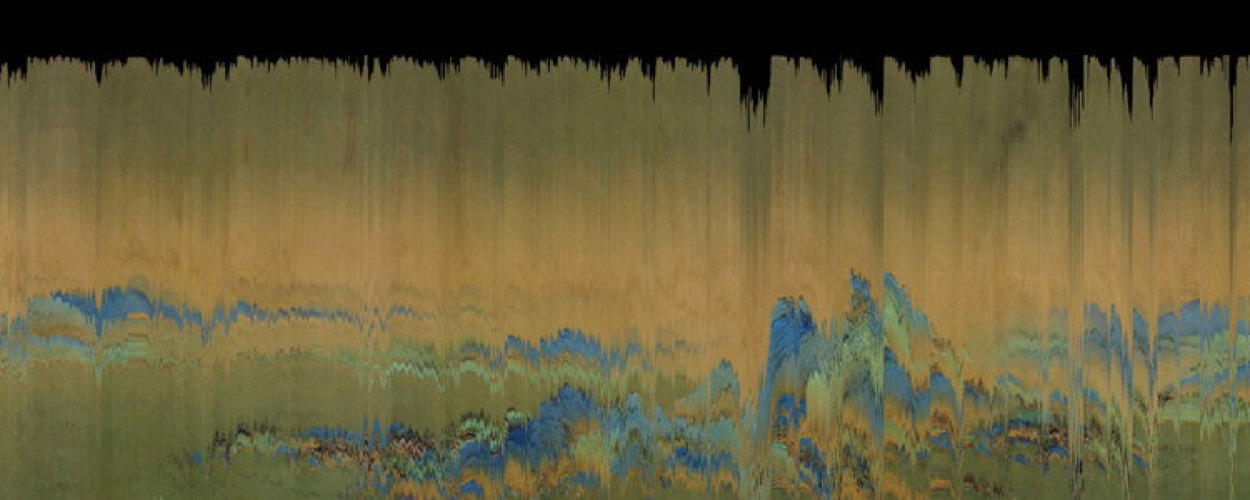![]()
THE ARBITRARY ART OF NUMBERS – GALLERY SHOW
Thursday, Dec 3rd through Sunday, Jan 17, 2016
Weekdays 9am to 10pm, weekends 10am to 6pm
Opening Reception Wed, Dec 9, see more information below
Made in NY Media Center by IFP
30 John St, Brooklyn, NY 11201 (Dumbo)

Frances Yuan Wang
Visualization of data promises us new insights. However, the relationship between distinct kinds of data is a rather arbitrary one, since on the computer level it is represented as numbers. It is in the eye of the observer to connect the dots in a meaningful way. Curated by Hans Tammen and presented at Made in NY Media Center by IFP, “The Arbitrary Art of Numbers” features new media artists addressing this issue in their own way: with Frances Wang’s peaceful street scene manipulated by geolocation, Yuxi Cao’s distortion of an iconic 900 year old Chinese painting using Beijing’s air quality data, Kurt Ralske’s poetic rendering of ancient Egyptian hieroglyphics, Matthew Ostrowski’s re-imagination of Koyaanisqatsi as a colorspace, Eva Davidova’s mixing of spaces and bodies to create uncertainties, and Emilio Vavarella / Daniel Belquer highlighting topics and keywords of all the memories collected by their drone project.
Curated by Hans Tammen.
With:
Matthew Ostrowski: aaaiiKnoqssty (2015)
Eva Davidova: Transfer And Disappearance (2015)
Frances Wang: 49th St (2015)
James Yuxi Cao: A Thousand Li of Rivers and Mountains (2014)
Emilio Vavarella and Daniel Belquer: Mnemodrone – Chapter Four (2015)
Kurt Ralske: CanopicPanoptic (2015)
FEATURE AND INTERVIEWS ON SINOVISION
EXHIBITION WORKS
Frances Wang: 49th St (2015)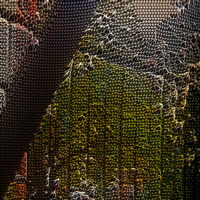
49th St captures a peaceful scene on the street on a normal day. As we live in a digitalized age, everything that can possibly be recorded have been made into data. In the video, the scenery is constantly manipulated by the real-time data feed based on the geolocation. A location is more than a place where we live any more. It drives all the data about our experience and history.
Frances Yuan Wang is an intermedia artist and creative technologist whose work focuses on the dynamic relationships between human movement and our physical environments, creating an understanding of senses and perception relating to the world around us. Her works have been presented at multiple venues, festivals and conferences in New York and internationally, including: Harvestworks, Wassaic Project, The Firehouse Space, Make Music New York, Culture Hub, Maker Faire, the Nordic Conference on HCI in Finland, and the International Conference on Live Interfaces in Portugal.
Matthew Ostrowski: aaaiiKnoqssty (2015)

A digital film is simultaneously a cultural object and a data file, a temporal experience and a set of instructions for the drawing of pixels on a screen. 117,312 frames of the 1984 film Koyaanisqatsi = 117,312 pixels, the color of each derived from the most prominent color in each frame. Seeing in some sense the entire movie at a glance, this work displays the movie twice: along the temporal grid, somewhat as we would experience it, and as a colorspace, the location of each frame determined by its visual, rather than temporal, relations to other frames.
A New York City native, Matthew Ostrowski has been creating art with electronic and digital media for over twenty years, having worked as a composer, performer and installation artist, exploring music, multimedia, video, and robotics. Using digital tools and formalist techniques to engage with quotidian materials — sonic, physical, and cultural – Ostrowski’s work explores the liminal space between the virtual and phenomenological worlds.
Eva Davidova: Transfer And Disappearance (2015)
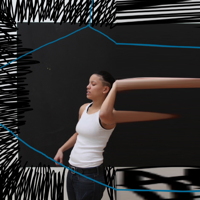
I think of data and its mixture with our bodies’ as a clear sign of the permeability of the material world. Data is real and omnipresent, but not inescapably true. We are not only transmitters of it—we spin it in motion. A download of “us” is happening in the digital space, and maybe erasure. Being manipulated, I try to use manipulation as my own strategy. In this work I am attempting to transfer myself by movement. A space and a body, made by data are continuously uncertain, and by entangling it’s bits with those of the body, a space can become a person and, in a sense—give their information away.
Eva Davidova is a Spanish/ Bulgarian artist working in New York. Her work has been exhibited at the Bronx Museum, New York; Everson Museum, Syracuse; Albright Knox Museum, Buffalo; MACBA, Barcelona, CAAC Sevilla; Instituto Cervantes, Sofia; and many others. She received the 2008 M-tel Award for Contemporary Bulgarian Art; and the 2009 Djerassi Honorary Fellowship. Recent projects include Happenland at Radiator Gallery in NY; Feeding Alice at the Holo Center, NY; Living and Dreaming at the Bronx Museum; III Moscow Biennale; LOOP; Scope Basel Video; Roma Contemporary; and solo exhibitions at the Contemporary Arts Center La Regenta and the Everson Museum’s Urban Video Project, Syracuse. Davidova was educated at the Complutence University in Madrid and the Kliment Ohridsky University in Sofia.
James Yuxi Cao: A Thousand Li of Rivers and Mountains (2014)

A Thousand Li of Rivers and Mountains is an interactive installation that “repaints” Wang Ximeng’s famous painting from the Northern Song Dynasty. Using a live data feed from the “Air Quality Index of Beijing” website, Cao’s work distorts the 900 year old representation of mountains and landscapes, transforming it into a new piece that disrupts established views. The distortion of the image is directly linked to the amount of air pollution, up to the point that the landscape is completely falling apart. This work is using code to distort a familiar object in a way that questions established views, connects the past and the present, and hopes to influence the public.
Born in 1990, James Yuxi Cao graduated from the Department of Space Design, China Central Academy of Fine Art in 2013. He loves to design/collaborate/consult on interesting projects across the spectrum of sound-visualization, programming & computing, interactive and space design, especially where those areas meet. He worked on numerous design projects including space design, new media art installation and public art. In 2013 he founded the AXIStudio, a new media interdisciplinary design studio in China. He is currently working on his MFA at School of Visual Arts / Computer Arts Department in New York City.
Emilio Vavarella and Daniel Belquer: Mnemodrone – Chapter Four (2015)
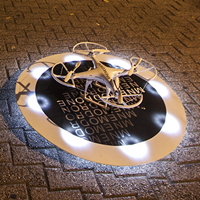
MNEMODRONE is a transmedia chapter-based memory-collecting project based on drone technology that investigates the social and philosophical issues of coexistence between humans and artificial intelligences. CHAPTER FOUR presents a data visualization of the data gathered in the previous three chapters of the project, highlighting topics and keywords of all the memories collected by MNEMODRONE.
Emilio Vavarella was born in Monfalcone (Italy) in 1989. He graduated summa cum laude from both the University of Bologna with a B.A. in Visual, Cultural, and Media Studies, and from Iuav University of Venice with an M.A. in Visual Arts and study abroad fellowships at Bezalel Academy of Tel Aviv and Bilgi University of Istanbul. Emilio’s work has been recently shown at: EYEBEAM, ISEA, SIGGRAPH, GLITCH Festival, Media Art Biennale, European Media Art Festival Festival and Japan Media Arts Festival. His work has been published in: ARTFORUM, Flash Art, Leonardo and WIRED. He currently lives and works in New York.
A contemporary intermedia artist, Daniel Belquer works internationally to blur the temporal frontiers once bounding classic artistic genres from emerging technologies. Daniel has worked as an artist, a Max/MSP a programmer, a composer, a teacher, a project manager and as an experimental theater director. Wearing several hats has kept him engaged with the technical as well as artistic aspects of his installations and theatrical works. He’s the Head of the Creative Team at Harvestworks Digital Media Arts Center and founder of Harvestworks’ International Art Collective(HIAC). He has presented his projects at Transfer Gallery, Hyphen Hub, Spectrum, Parsons, Maker Faire, 3 Legged Dog and the Dark Circuits Festival.
Kurt Ralske: CanopicPanoptic (2015)

“CanopicPanoptic” (2015) is a representation of information flow, as seen with a metaphoric or poetic eye, rather than as a functionally accurate data visualization. In our culture of 24/7 connection, data moves along unpredictable paths, at high speed, appearing everywhere, with unvarying intensity. These qualities were applied to the source material of “CanopicPanoptic”, a text in ancient Egyptian hieroglyphics. The original text is lost, but through its transformation into pure data flow, perhaps it regains something of its original qualities of mystery and evocation of knowledge. What is the relationship between knowledge and information? What allows knowledge to manifest as information, and vice versa?
Kurt Ralske’s video installations and performances enact a dialogue with history: an exploration of the past that proposes a new view of the future. His work has been exhibited internationally, including at the Venice Biennale in 2009 and 2015, the Guggenheim Bilbao, and the Los Angeles Museum of Contemporary Art. Kurt is the recipient of a Rockefeller Foundation Media Arts Fellowship, and received First Prize at the Transmediale International Media Art Festival in Berlin in 2003.He is Chair of the department of Media Arts (Digital Media / Video / Film / Animation / Sound) at the School of the Museum of Fine Arts, Boston.
OPENING RECEPTION Dec 9, 2015
Wednesday, December 9, from 6 – 8pmMade in NY Media Center by IFP
30 John St, Brooklyn, NY 11201 (Dumbo)
Matthew Ostrowski (Lecture): The Anxiety Of The Client – Dilemmas Of The Database As A Compositional Tool
This lecture is concerned with some of the dilemmas inherent in creating artworks using databases as source material. Using Adorno’s idea of the opposition between the instrumental and the mimetic, it argues that a database is by nature purely instrumental, and the ideology implicit in the digital object inevitably determines the outcome of the work, leaving no opening for the mimetic faculties.
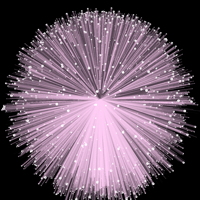
Yunling Song
Yunling Song (Performance): Redark
Redark is a live audiovisual experiment on particle dynamics, including attraction, repulsion and collision. It is mostly programmed using Processing/Java, and uses Syphon plus CoGe to visually map the sound frequency in real time. Each particle is represented by a simple geometric shape, collectively forming a minimalist visual style.
Yuxi Cao (Performance): Macrocosm
MACROCOSM is a living sound visualization performing project that evolve from Yuxi Cao’s own aesthetic perception about displacement of polygons. the performance is about using the data from sound like FFT and Level to disrupt or recreate the object through his performing system. This is a system contain live sound detective analysis and the recreation of visual object from sphere. Mainly related to the combination of generative art and new form of visual performing. the whole project involved the new game engine called unity in order to enhanced the 3d texture rendering.

